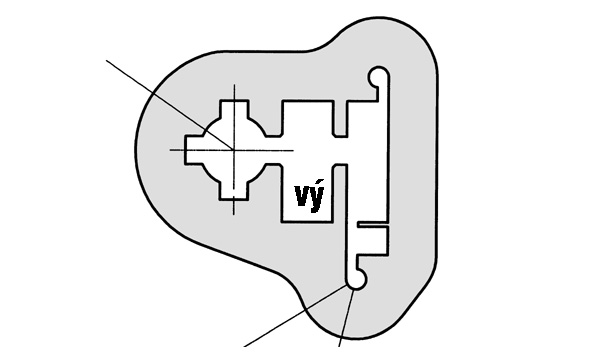
Artillery Turret R-H-S 78 - Orlicke mountains, Czech Republic
Posted by:  ToRo61
ToRo61
N 50° 11.762 E 016° 31.062
33U E 608324 N 5561528
Artillery Turret R-H-S 78 (code name "Na pasece") is part of the Hanicka Artillery Fort.
Waymark Code: WMMZQZ
Location: Královéhradecký kraj, Czechia
Date Posted: 11/29/2014
Views: 24
The Artillery fortification
Hanicka consists of six forts - one blockhouse of entry, three infantry forts, one artillery fort and one fort for an artillery turret.
The plan of upper floor of the Artillery Turret R-H-S 78

The fort
R-H-S 78 (code name "Na pasece") was planned to be fitted with a revolving and also elevating armoured turret armed with twins of 10 cm howitzers Mk 38 with the fire range of 11.9 km and the rate of fire 30 - 40 RPM. This fire element was intended to play a significant role in strengthening the fire barrier of heavy forts and in directing the fire against enemy in front of the main defence positions. The artillery turrets (marked with abbreviation "RO”) presented a technically very complex and up to date facility. The turret revolved 360°, and it could elevate by 70 cm. In the retracted position the turret would have been hidden behind the massive armoured collar, and would have been elevated only for a short time necessary for firing. The weight of the movable part of the turret was 120 tonnes and the whole installation weighed 420 tonnes. The purchase price for one turret exceeded 7 million crowns. In 1935-38, further development was made in škoda Plzen, where the prototypes were constructed. Unfortunately, their construction was completed only during the occupation and taken over by the Nazi Army. The object S-78 remained unarmed in September 1938, and neither later were installed there any field artillery weapons, in contrast to the artillery casemate S-79. The design documentation was not definite at the time of initiation of the building works, and thus the construction of S-78 was awarded afterwards, in 1937. This is the reason why the block was concreted later than other blocks of the whole fortress and it consumed 2 940 m3 of the concrete mixture. The garrison unit was supposed to count 61 men. The whole fort was built in the earth, only the armoured components are brought above the surface. Thanks to this fact, the fort was not put through bombing and firing tests during the occupation, but endured the war undamaged. The object was protected not only because it was mostly hidden under the earth surface, but also because it was constructed, alike other forts, in the highest resistance class (ceiling and walls under attack 350 cm, other walls 150 cm). An armoured copula formed a part of the ceiling (installed on 9 July 1938) and was supposed to be armed with a heavy machine gun Mk. 37. However during the mobilization the copula remained unarmed, because the necessary gun carriage and inner equipment had not been manufactured. The only installed weapon was a light machine gun Mk. 26 placed in the armoured bell on 13 July 1938, which was intended to assure the direct defence of the object Two small ventilation bells ensured suction of the fresh air and evacuation of the polluted air. On the upper floor there was an entrance to the artillery turret and to both armoured posts, as well as the space for preparation of ammunition, an emergency ammunition storage room, and water store tanks. On the lower floor there was a filtering room, commandant’s post, crew barracks, sanitary facilities (washroom and WC) and a rations store. Below the surface of the lower floor there was an airtight room used as a container for spent cartridges falling off the howitzers. The spent cartridges would have been removed with the lift to the underground (depth 30 m) to be refilled and reused. In the framework of the operation "Project Kahan" the fort S-78 was supposed to fulfill the role of the commander station for the whole complex. The turret shaft was filled with concrete, and the whole object was reinsulated and then earthed together with armoured components above one of the ventilation bells. The interior was furnished with offices and sanitary facilities, and a lift was installed to the shaft.
Source and more information